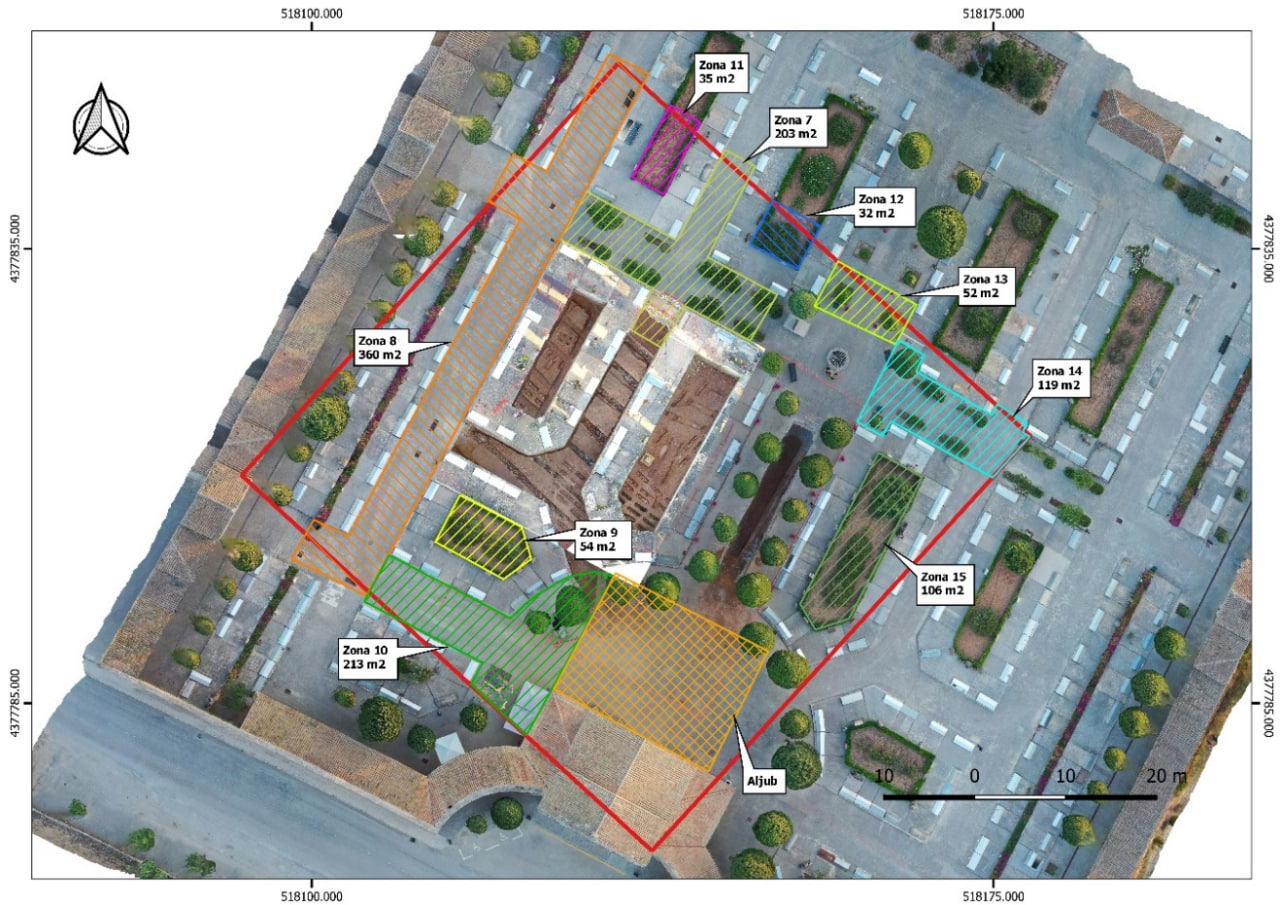The Government is working on the hypothesis that the women may have formed part of the group of five female militiamen from the Bayo expedition murdered by the pro-coup troops in September 1936.
TDB keeps you informed. Follow us on Facebook, Twitter and Instagram.
Son Coletes cemetery
The third phase of excavations and exhumations in the Manacor cemetery, carried out by the Government as part of the Fourth Plan for Graves and Democratic Memory of the Balearic Islands, has already located the remains of another 20 victims of the coup d’état, the Civil War and Franco’s repression in the graves of Son Coletes.
Since the third intervention in the Son Coletes cemetery began on 8th February – the first and one of the most ambitious of the Government’s Fourth Plan for Graves and Democratic Memory – and up until today, it has been possible to locate two of the boundaries of the old Son Coletes site in the Manacor cemetery, the continuation of the graves documented in previous campaigns (those promoted by the Government in 2020 and 2021, within the Second and Third Plan of Graves of the Balearic Islands), and seven new adjacent graves in a north-east direction.
It is in the exhumation of these new graves, specifically in grades 11, 12, 13 and 14 – those located next to the north-eastern boundary of the old Son Coletes site (see photo) – that the remains of at least 20 people have been recovered, 13 of which have a complete skeleton that has not been affected by the remodelling work on the cemetery.
The characteristics of some of the bodies exhumed, and those of the remains of clothing associated with these bodies (zips, rubber-soled espadrilles, etc.) point to the fact that they could be, at least in part, militiamen and militiamen linked to Captain Bayo’s disembarkation in Mallorca in the summer of 1936.
Moreover, in grave number 14, the one furthest from the cemetery gate, three complete skeletons have been found whose biological sex is estimated to be female and which, due to the characteristics of the burial – face down, one on top of the other and covered with lime – seem to be victims of a simultaneous burial.
The Government is therefore working on the hypothesis that they are three of the five nurses from Alberto Bayo’s expedition who were executed in Mallorca on 5 September 1936 by the pro-coup troops led by the Italian fascist Conde Rossi, and who would go down in history under the name of The Five of Mallorca.
According to the historiographical information provided to date, this group and that of the already identified Roges del Molinar would be the only two groups of women murdered and buried in Son Coletes.
“The hypothesis we are working with is that they are part of the group of militia women murdered between the 4th and 5th of September 1936, but we do not have any confirmation at this stage. We have to wait for the results of the anthropological and genetic analyses, but there is a high probability that they are the ones because there is no other known group of women who were murdered together”, explained the vice president and councillor for Energy Transition, Productive Sectors and Democratic Memory, Juan Pedro Yllanes.
In parallel to the laboratory work, which will confirm or disprove this hypothesis, the Government’s technical team, a joint team of archaeologists and anthropologists from Aranzadi and ATICS, will continue the excavation and exhumation work in the Manacor cemetery over the next few weeks – the intervention is estimated to last between four and five months.
“There are still areas to be explored and graves to be opened. We hope to increase the number of victims located, which to date in this place already stands at a minimum of 106 people murdered,” said the regional secretary for Productive Sectors and Democratic Memory of the Government, Jesús Jurado.
